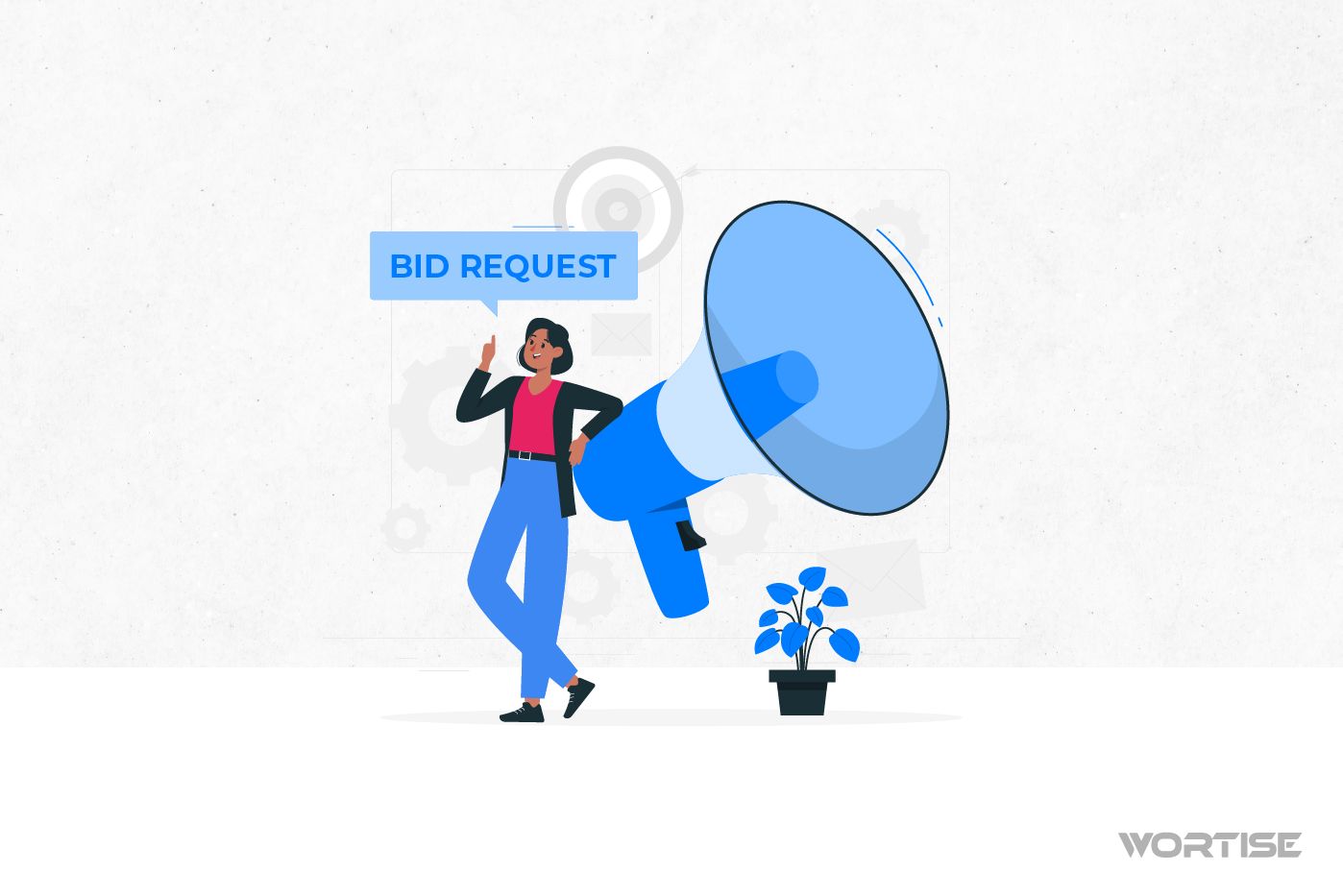There are two terms you must know if you work in app monetization: Ad Network and DSP. At first glance, they may seem like similar platforms, but their functions and approaches differ significantly. Knowing how to choose the right option can make all the difference in the success of your campaign.
It’s not just about activating an advertising campaign; the idea is to maximize it to achieve the expected results: reach premium audiences, get a lot of interactions, and for publishers, monetize more effectively. This is where the DSP (Demand Side Platform) and the ad network play a crucial role, ensuring much of the campaign’s success.
While it’s not a boxing match, in this article, we want to put two contenders in the ring: ad network vs DSP, and examine their strengths, weaknesses, and main differences. Join us!
What is an Ad Network?
An ad network is an advertising network, a platform that acts as an intermediary between advertisers and publishers. Its operation is crucial because it allows advertisers to find available advertising spaces on websites or mobile apps.
Ad networks gather advertising inventory from various sources and offer it to advertisers as an alternative to showcase their ads, giving them the opportunity to reach large audiences in different parts of the world.
Beyond that, they also manage ad distribution and facilitate billing and payment between parties. In short, we can say that it is a marketplace where sellers and buyers meet to reach transparent and secure agreements—all in one platform.
Additionally, ad networks provide targeting tools, audience segmentation, ad tracking, and various ad formats to ensure better campaign performance.
What is a Demand Side Platform (DSP)?
On the other hand, a DSP (Demand Side Platform) allows advertisers to buy advertising inventory in real-time and in an automated manner across multiple ad exchanges, supply-side platforms (SSPs), and ad networks. They are connected to various ad exchanges.
All this is achieved through a unified interface and using algorithms that leverage real-time bidding (RTB) to optimize purchasing decisions. DSPs offer advertisers enhanced targeting capabilities for optimal performance.
With a DSP, it is possible to set precise segmentation criteria and make intelligent decisions based on data. This provides automation and personalization in the advertising buying experience.
Ad Network vs DSP: Key Differences
It’s impossible to imagine digital advertising without ad networks and DSPs. Both serve as vehicles that make the online advertising ecosystem work automatically, preventing publishers and advertisers from wasting time on manual agreements.
Autonomy
One of the main differences is that ad networks function as centralized hubs where publishers can monetize their spaces by connecting with advertisers worldwide. In contrast, DSPs allow advertisers to programmatically and autonomously purchase inventory.
For example, DSPs provide greater control and transparency in the process of buying spaces and their subsequent execution, which is quite different from ad networks, where there is less control over the specific places where ads will be shown.
Better Segmentation Performance
DSPs have advanced technology and a wealth of user data that helps reach specific audiences to maximize ad performance. While ad networks also have this feature, it is not at the level of DSPs. Their segmentation is more basic.
With DSPs, it is possible to reach the ideal user at the right time thanks to personalized segmentation that includes demographic data, interests, device type, age, gender, and more. Additionally, advertisers can segment bids in real-time to get the best option.
Inventory Purchase
In ad networks, inventory purchases are mostly made through established agreements with publishers. This means there are prior conversations and agreements that determine advertising guidelines with a bit more effort.
On the other hand, with DSPs, inventory purchases are made in real-time through auctions. This mechanism is automated, and advertisers compete for the available inventory.
Optimizations
The success of a campaign sometimes depends on the adjustments made along the way. With ad networks, optimization is governed by pre-established agreements and generally does not allow for real-time adjustments.
Conversely, DSPs have a valuable feature: the ability to frequently optimize to adapt to advertising dynamics. This real-time optimization feature improves campaigns while they are running, as it allows for the correction of anomalies that arise unexpectedly.
Pricing
In this aspect, there may not be much difference, but it can be said that prices in ad networks tend to be more centralized. In other words, they depend on a central power that “monopolizes” prices, although this is not necessarily a bad thing, as it helps regulate demand.
Meanwhile, DSPs provide greater price transparency by promoting auction purchases, where advertisers have more visibility into costs and the opportunity to secure good spaces at reasonable prices.
A Broader Market
Although ad networks give access to a wide network of publishers, mobile apps, and websites where good profitability can be achieved, it is proven that DSPs offer a larger range of inventory sources, where premium publishers and premium advertisers can be found. It’s a win-win.
Ease of Use
In this regard, the clear winner is the ad network, which offers superior convenience for advertisers using the platform. DSPs tend to be a bit more complex—depending on the perspective—because they offer more control tools, which requires the user to have a bit more knowledge in certain areas.
Should I Use an Ad Network or a DSP?
With the differences laid out, you may now be wondering which platform suits you better, an ad network or a demand side platform. Let’s resolve this dilemma once and for all.
What Do You Want to Achieve?
Well, the first thing we should mention is that it all depends on your objectives and needs as an advertiser. For example, if you aim to maximize advertising revenue and achieve optimal exposure, an ad network might be a good option. But if your goals involve having more control and autonomy over ads, a DSP might work better for you.
Who Is Your Target Audience?
If you want to reach a specific audience—assuming you want to target a fixed niche—then a DSP with its ability to reach precise audiences with advanced segmentation technology that measures interests, online behavior, and demographic data would be suitable. This contrasts with ad networks, whose segmentation is more basic and would only serve if your ambitions are a bit more modest.
How Comfortable Are You with Technology?
Another point to consider is your level of technical knowledge, as DSPs usually require a higher level of experience for implementation due to their advanced technologies. If you find it challenging to configure technical aspects related to advertising, you might prefer using ad networks, which require fewer adjustments.
Is Budget a Concern?
And of course, we need to talk about budget to determine which is more convenient. In theory, ad networks tend to be more accessible for advertisers with limited budgets, as they generally do not require a minimum spend. However, if you don’t mind investing more because you think you’re Donald Trump—just kidding—then choose the DSP, which offers greater opportunities to scale campaigns and access premium inventory in exchange for a higher budget.
In Conclusion
We present the platter; you decide which bite to take. As you can see, DSPs offer advanced segmentation options, a larger inventory network, and numerous advantages, but they also have their downside: they are usually more complex from a technical standpoint and require more money to bid higher and ensure your ads’ visibility. They guarantee good effectiveness but require greater technical knowledge.
Ad networks also have their disadvantages, such as less transparency about the source of ads and the advertisers backing them. Of course, not all ad networks, but most have technology capable of detecting fake ads or interactions promoted by bots.
If you’re struggling to choose between the two, don’t worry: combine your strategy and use the strengths of both to maximize results. Also, let’s not forget that ad networks are intermediaries that connect publishers and advertisers, helping them expand their goals.
Does the Effectiveness of My Campaign Depend Solely on Ad Networks vs DSP?
Yes and no. While ad networks and DSPs are key to ensuring optimal performance of advertising campaigns, nothing would make sense if the strategies we use are poor or basic.
Therefore, we suggest being clear about your objectives from the beginning and defining the messages and value propositions you want to communicate through your ads. Leverage the platforms’ segmentation and use high-value demographic and behavioral data.
And of course, try to use innovative ad formats that encourage users to interact. Don’t stick to static formats; use those that are attractive and have an additional plus: an eye-catching CTA, a variety of colors, and an innovative design.
The idea is to make the most of these technologies and continuously monitor the campaign’s performance to know when to optimize. Neither ad networks nor DSPs are magical, but they are functional and great allies for publishers and advertisers.
Access Global Premium Demand with Wortise: Transparency and Optimal Earnings Guaranteed
Hello, publisher! At Wortise, you can improve the monetization of your apps or games with our AI-based solutions.
We are an ad mediation platform that works with first-party data to connect you with premium advertisers and maximize the value of your inventory. With Wortise, you can leverage AdMonet, an advanced solution for monetizing applications and games launched in early 2024, connecting you with over 200 advertisers and a wide network of ad networks.
Simplify the monetization process with us and enjoy a high eCPM, personalized support, and one-on-one guidance to maximize your efforts.




